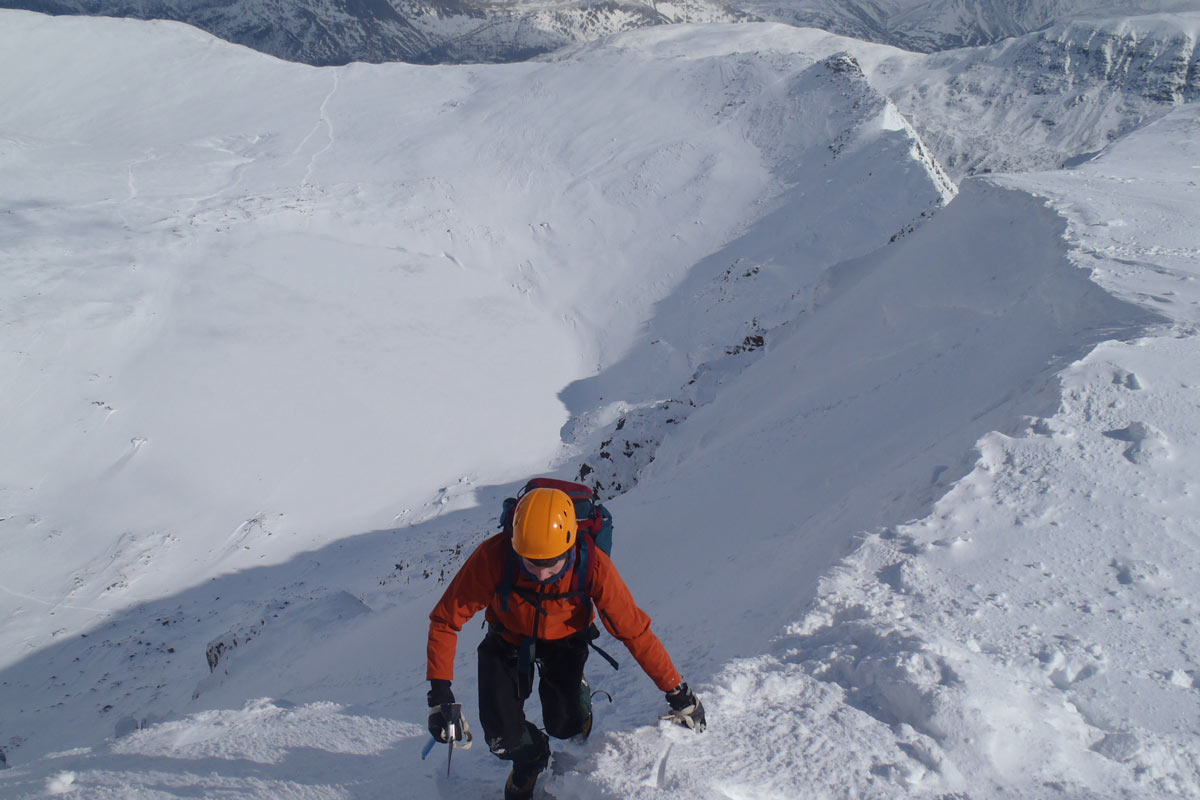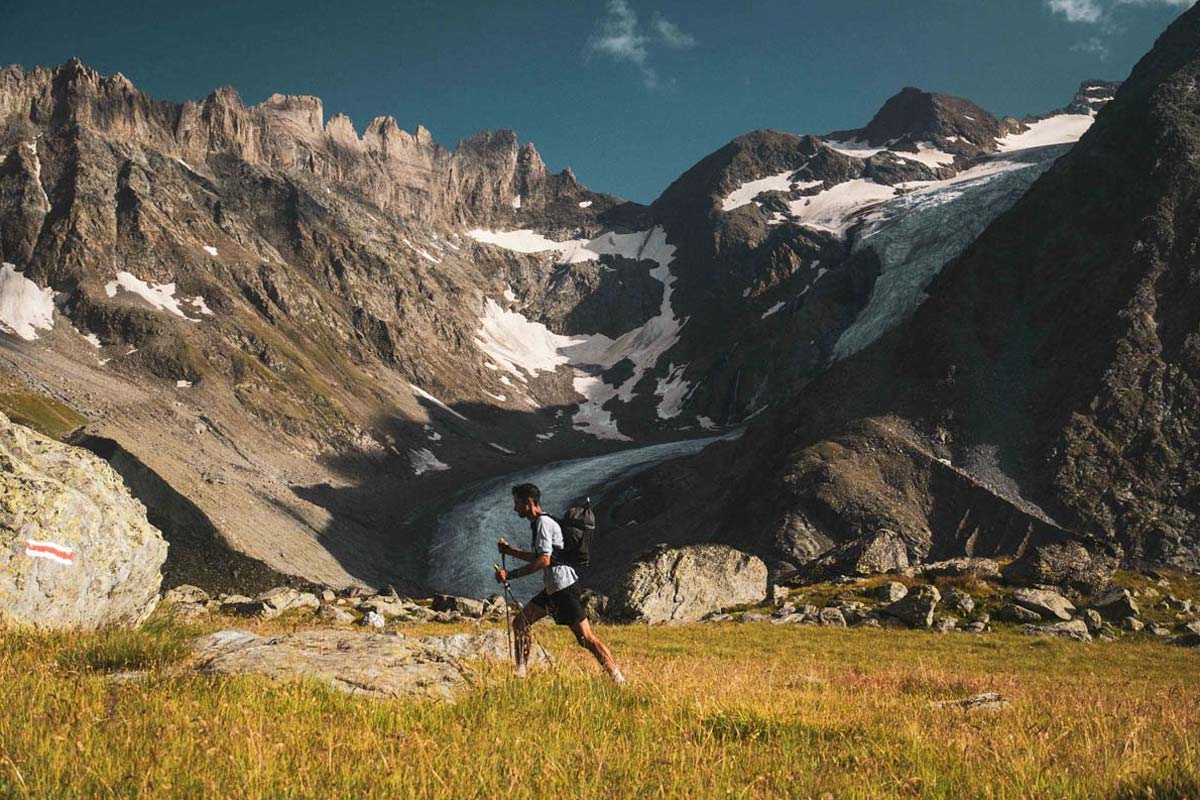2018 Nominee
PROJECT INFORMATION
NEW ENTRY
Project Status: Raptor protection has been ongoing for a number of years, arctic-alpine flora protection and climbing commenced in winter 2017/18
Location: Lake District National Park, England
Contact: Pete Barron
Email – Facebook – Website
GOALS AND OBJECTIVES
The project’s aim is to work with climbers in winter to give as much information as possible for a judgement to be made on the suitability of climbing conditions to avoid damage to rare upland flora some of which is unique in England.
This has included the installation of air and ground temperature sensors at two locations on key winter climbing areas to give real time, web based information on air and ground conditions at 5, 10 and 15cm turf depth. This is updated every five minutes. This keys in with the daily report from the National Park of the winter conditions from the summit of Helvellyn
In summer to work with climbers to highlight, and where agreed, restrict climbing during the breeding season to protect declining species on the high crags such as peregrine falcon and raven.
RELATIONSHIP WITH LOCAL COMMUNITIES
We work very closely with the local climbing fraternity through web information, forums, the National Park Weatherline service to provide information to enable a judgement to be made about good climbing conditions in winter. In summer for bird protection signs are placed at previously agreed crags, all local climbing shops are aware plus web based information.
We also engage the non climbing local population in propagating and growing alpine flora for population expansion and local people are engaged in monitoring the crags so we can lift restrictions if nesting on a crag fails.
A huge benefit is the provision of local awareness of the special qualities of the area which in time aids support and protection for these rare species.
COLLABORATION WITH LOCAL AUTHORITIES
In the Lake District close joint working between the national conservation agency, the National Park and NGOs, such as John Muir Trust, is the norm and can be hugely successful as it is difficult for only one organisation to be as successful.
How:
Consent for special species work is granted by Natural England a governmental organisation.
The British Mountaineering Council is the national body for climbing and critical to getting information to climbers.
The National Park and John Muir Trust assist in placing of restriction signs for birds and the National Park help us with the arctic-alpine project.
Local bird club experts aid site selection.
The projects involve a wide range of organisations to achieve the goals.
BEYOND BUSINESS AS USUAL
In the Lake District we have been working to increase awareness of special habitats and species by holding meetings and publishing both green and white guides (summer and winter) to show sensitive areas and how climbing and the protection of the special species and habitat can go together with a little care and adaptation. We have installed temperature monitors in two climbing areas to inform on air and ground conditions. Once again a joint approach from our differing local organisations.
PROJECT MANAGEMENT
We have a management plan describing our aim of arctic-alpine species protection, monitoring and enhancement.
Raptor protection is via a small working group which close knowledge of the breeding sites and species.
John Muir Trust have a property budget which includes staffing for this work and is presently engaged in an appeal to raise further funds for our work on the Helvellyn range in the Lake District. Natural England and the National Park also have funds to contribute to this work on an annual basis. Climate change monitoring of our high mountain flora is important as the climate changes and funding can be available for this important work. Of course resources are always tight and often rely upon staff (and volunteers) from the organisations ‘going the extra mile’.
OPPORTUNITIES FOR VOLUNTEERS
Volunteers are a key element to the work of the John Muir Trust we would not achieve as much without. On these projects volunteers help to propagate the trees and flora, check and place climbing restriction signs, check the breeding status of important species as well as footpath maintenance, tree planting, litter collection and educational work.
The highlighting of these issues also generates a ‘stewardship’ approach to climbers who advise other climbers about winter conditions and climbers in summer often make contact to make us aware of breeding birds where they have been climbing and suggesting protection.
HOW WE COMMUNICATE
The John Muir Trust recently had an article in their main journal about arctic-alpine species. The BMC also publish similar articles in their membership magazine including bird restrictions. John Muir Trust uses Twitter (20k followers) and Instagram. The NP winter weather reports are followed by over 11k daily.
Much of any gain in awareness comes via peer pressure and so time is needed to ‘spread the word’ but this is what appears to be happening and there is a reasonably good understanding of the issues, most importantly, if not the fine detail. The more opportunity for spreading the word the better both locally and internationally.
RETURN TO 2018 UIAA MOUNTAIN PROTECTION AWARD PROJECT PAGE



